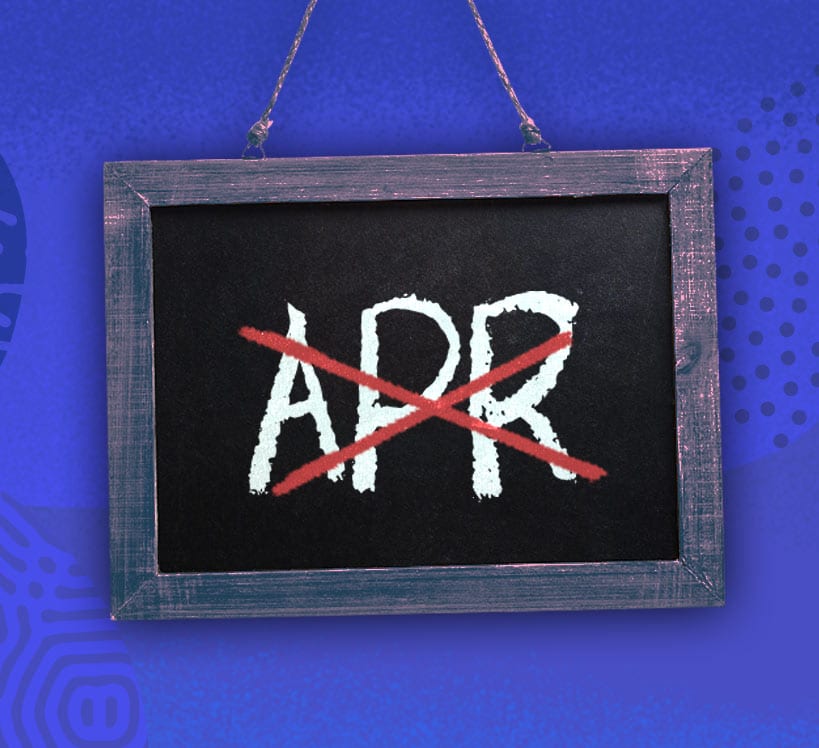When you are shopping for a business loan, one of the first things you will compare is the annual percentage rate (APR) of the loans.
While your instinct might be to think that lower is always better, that isn’t always the case, especially for short-term loans.
Lenders are required by law to tell you the APR even for short-term loans and it can create a false impression. The key word in APR is annual. APR is the rate you pay if your loan goes a year or longer. If you plan on taking out a short-term loan or paying your loan off before the year is up, APR is the wrong metric to use.
Economist Thomas Sowell explained it by comparing the cost of a hotel room. If the rate for a room is $100 a night, the annual rate for the room is $36,500. If you’re only staying for a week, however, your rate is $700.
While Sowell was speaking about payday loans, which have high-interest rates, the analogy is applicable to short-term business loans. The APR is the rate you’ll pay if the loan term goes a year or longer, but it isn’t what you will actually pay for a loan that lasts less than a year. Annualizing the loan is a great way to assess and compare the rate on long-term loans, but it isn’t the best way to evaluate short-term financing.
Evaluating the Effective of APR in Short-Term Loans
The Small Business Finance Association (SBFA) commissioned a study to evaluate the effectiveness of using APR as a way to compare loans. Not only did they determine it was a poor metric for comparison, but they also noted that most business owners don’t understand what an APR is in the first place.
Steve Denis, executive director of the SBFA went so far as to say that APR has become more a marketing tool than a useful way to evaluate short-term loans.
APR can be especially misleading for merchant cash advances or other forms of financing that don’t have preset terms. Interest compounds and can be substantially higher than the rates quoted depending on when the principal and interest are repaid.
Some regulators are looking closely at laws to determine the best way to accurately disclose the true cost of short-term business loans. When Congress passed the Truth in Lending Act (TILA) that requires disclosure of the APR, it was intended as a uniform disclosure for consumers to compare credit offers, but it doesn’t work as well for short-term loans.
California and New York regulators have now passed laws that require additional disclosures including the total dollar cost of financing over the term of the loan.
Breaking Down Short-Term Loan Costs
In a short-term business loan of less than a year, you’ll never pay the full amount dictated by the APR. The interest charged for a one-month loan would be multiplied by 12 to calculate the APR. This can drive up the APR even though it won’t change the cost of the loan.
For a short-term loan, the finance charge is the more useful measure to analyze short-term loans. By comparing what you will actually pay versus a theoretical APR, you can see the true cost.
A $10,000 loan with $500 in origination fees and a 5% interest rate and a term of 1 year works out to an APR of 14.69%. The same loan with a two-year term has an APR of 10.07%. If you shorten the long term to 6 months, however, the APR jumps to 22.96%.
However, when you examine what you actually pay in fees and interest, you see the difference. With the one-year loan, you pay $772.90. With a two-year loan, your fees and interest would be $1,029.13. With a six-month loan, your cost of borrowing is $646.34. It’s the length of the loan that is the variable determining how much you’ll pay.
So, if APR isn’t the best metric to use, how do you compare short-term small business loans?
How Do You Compare Short-Term Business Loans?
While the interest rate is one way to evaluate a short-term loan, you also need to assess the fixed costs, such as origination fees or application fees, along with the total interest paid on the loan.
Short-term loans typically have higher interest rates than long-term loans. Lenders will charge higher fees to recoup the cost of providing the loan. In a short-term loan, lenders have less time to recover their costs.
You will also want to evaluate the specific loan repayment terms. While most short-term loans require monthly payments, some require more frequent payments such as weekly or bi-weekly. You will even find some short-term business loans that require daily repayment.
What Is the Factor Rate?
Some lenders charge interest differently by using what they call a factor rate rather than an interest rate. Factor rates are less common than APRs and are generally associated with high-risk loans. They may have less stringent borrowing requirements, but include quicker repayment terms and high rates.
Let’s take that same $10,000 loan and this time apply a 1.1 factor rate. Multiply the $10,000 times 1.1 and you’ll get $11,000. The cost for the loan in this case will be $1,100. This represents your total cost of borrowing (minus any upfront fees or closeout fees) regardless of the length of time.
You also will want to assess the repayment terms. Many factor loans have weekly or daily repayment requirements.
Types of Short-Term Business Loans
Besides typical short-term loans, lenders offer additional types of products that provide short-term financing.
- Term loan: A lump sum loan with a specified repayment period.
- Business line of credit: Funds business owners can draw from up to the credit limit. Funds replenish as balances are repaid.
- Merchant cash advance (MCA): A cash advance on future sales.
- Invoice financing: A cash advance on outstanding invoices.
Some business owners will use business credit cards as a way to get short-term financing. This can be a quick and easy way to bridge gaps in cash flow, but credit cards carry high-interest rates.
Look Beyond the APR
With any loan, it’s up to you to evaluate the terms, conditions, and costs to determine what’s best for your business. Don’t just look at the APR. Dig deeper and determine the true cost of borrowing to make a better, more informed business decision.






